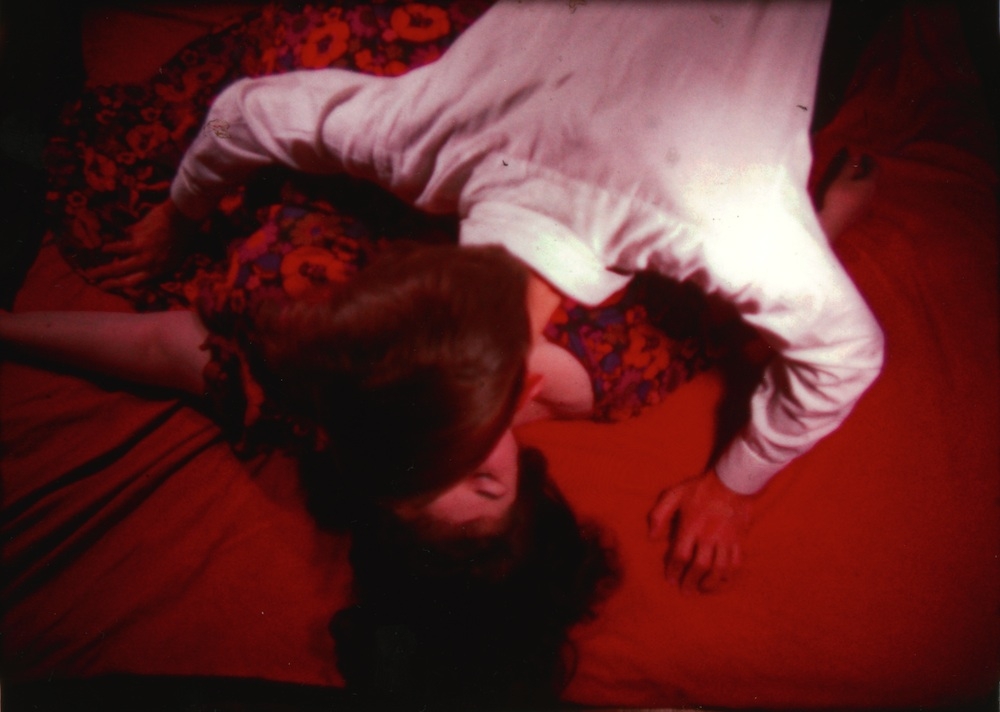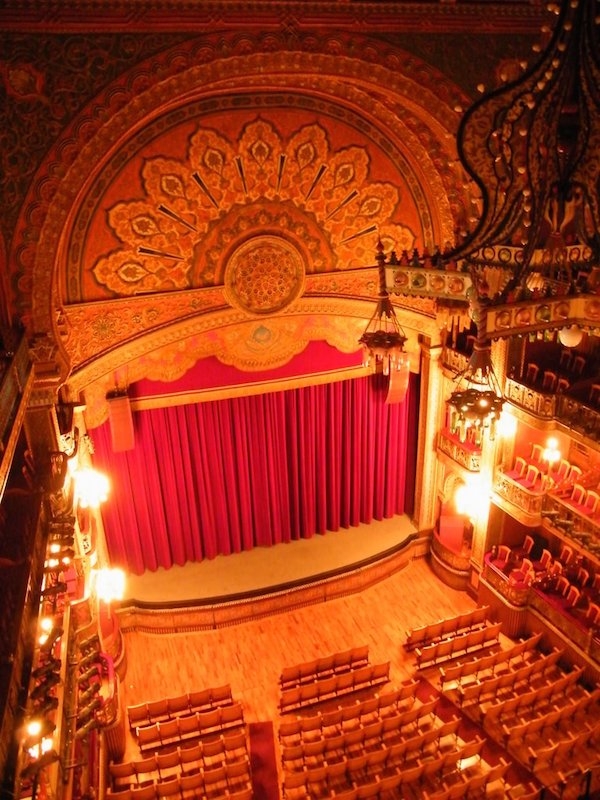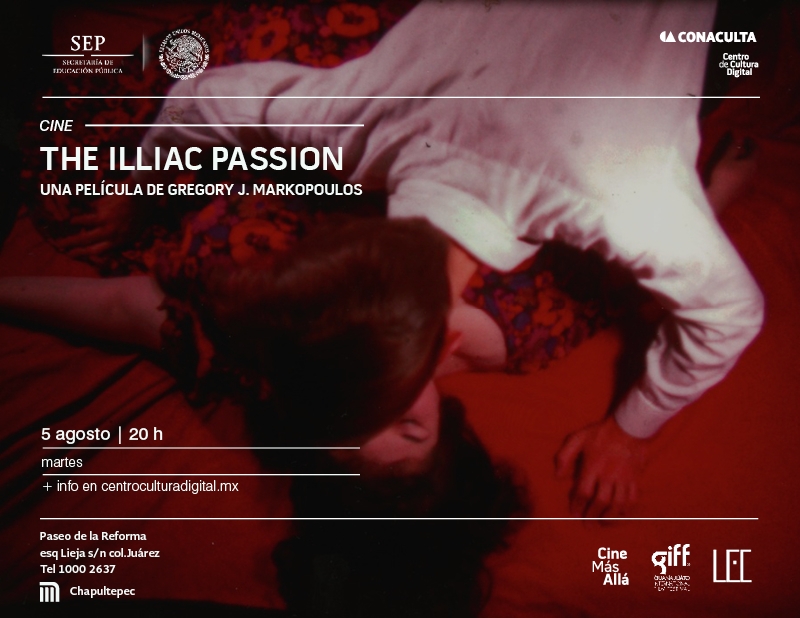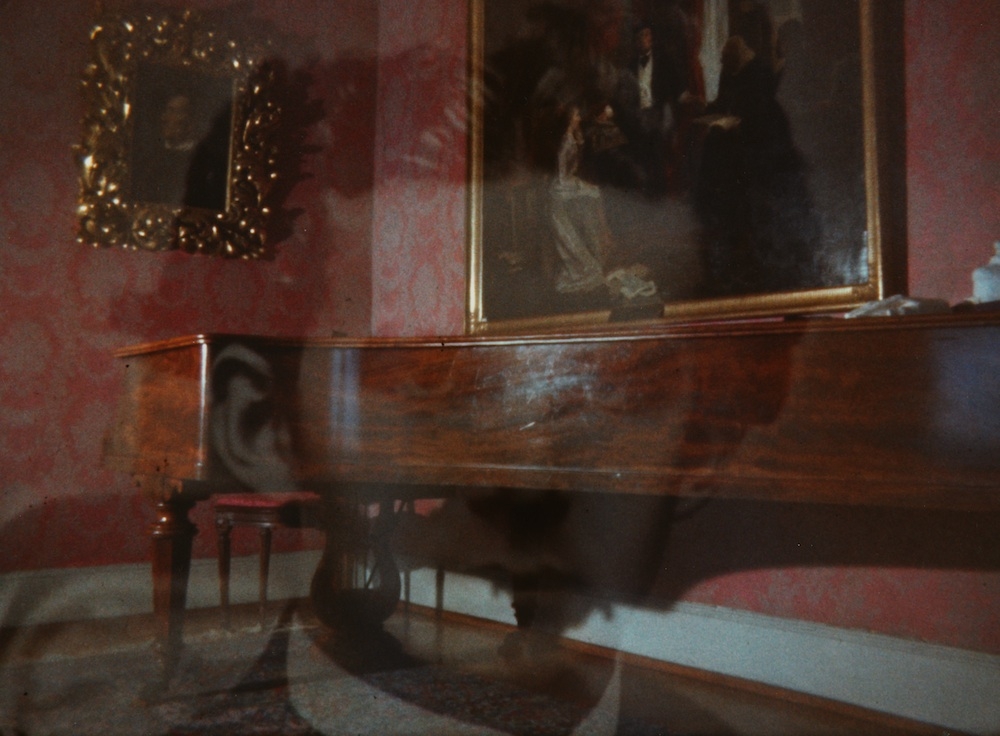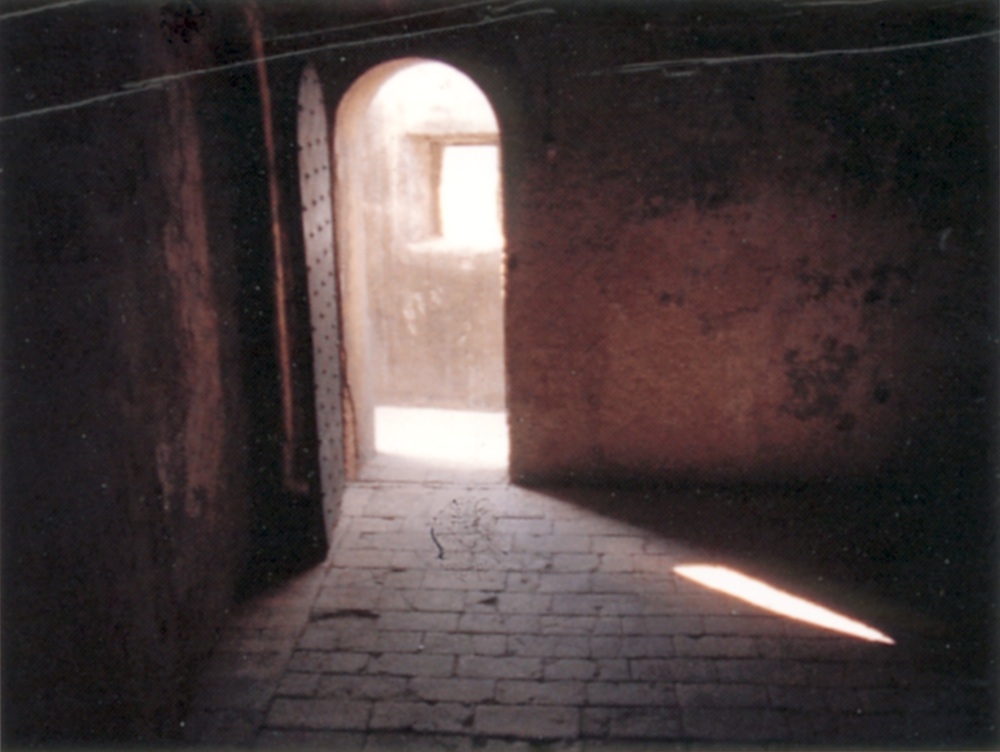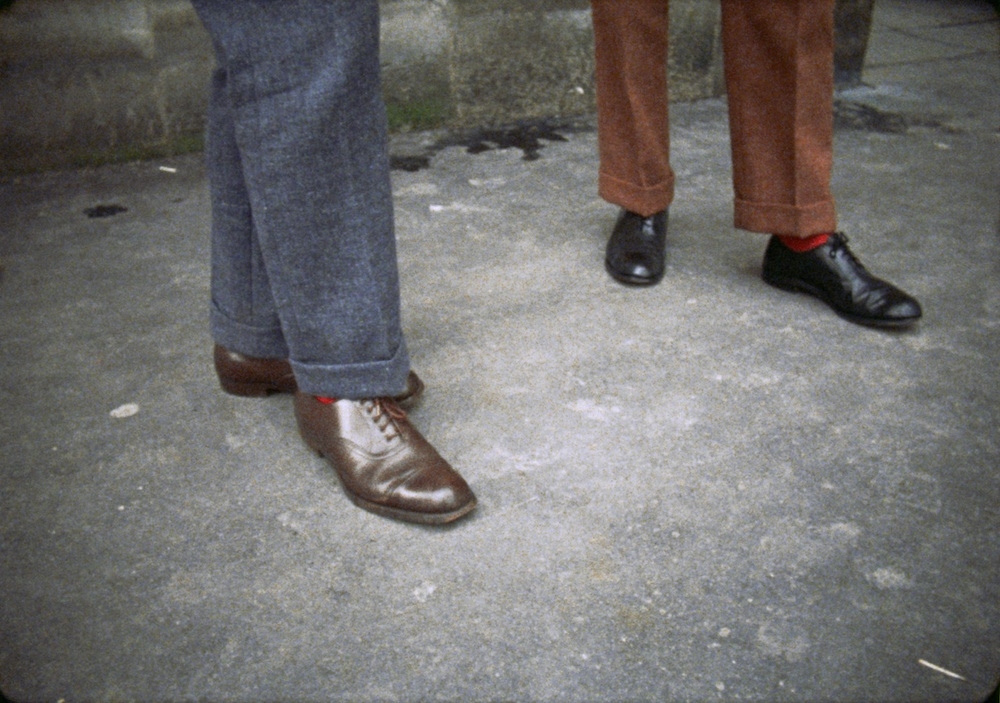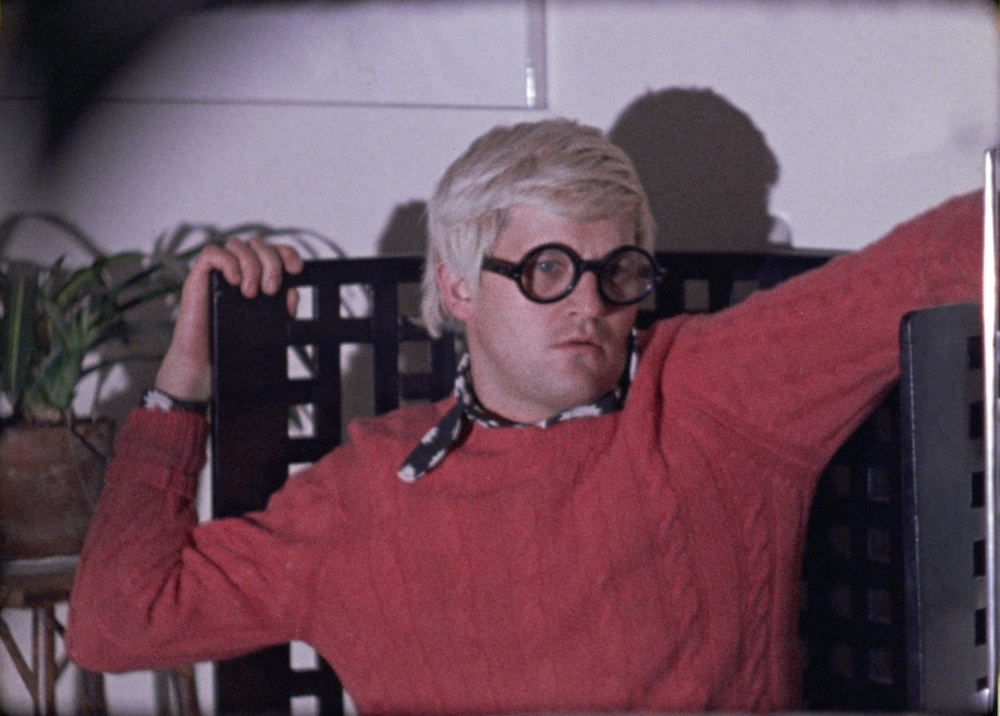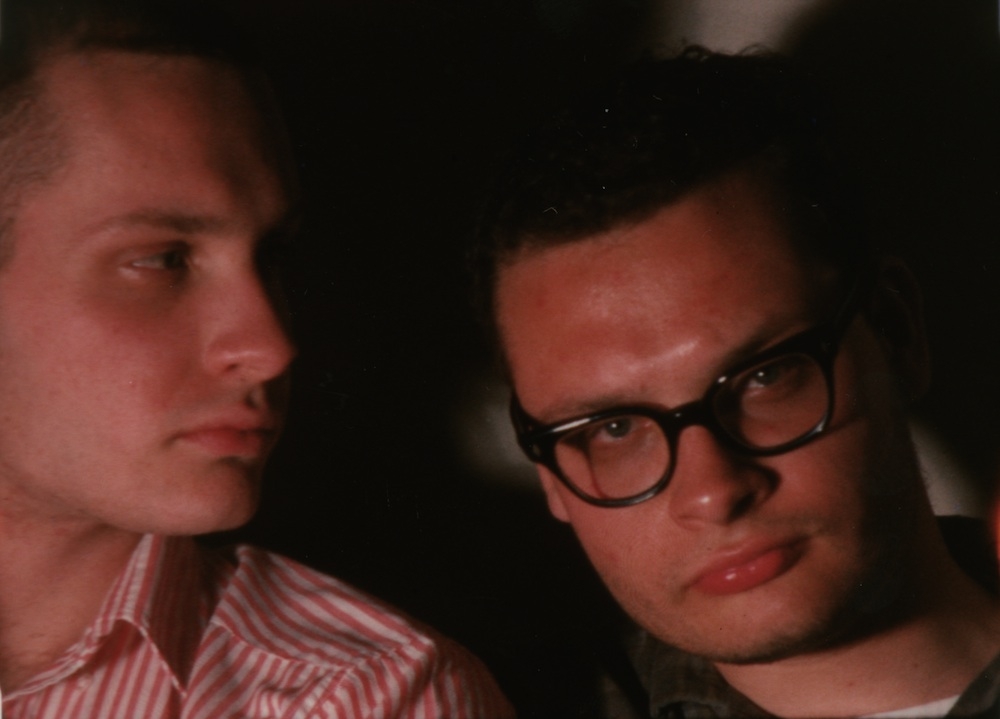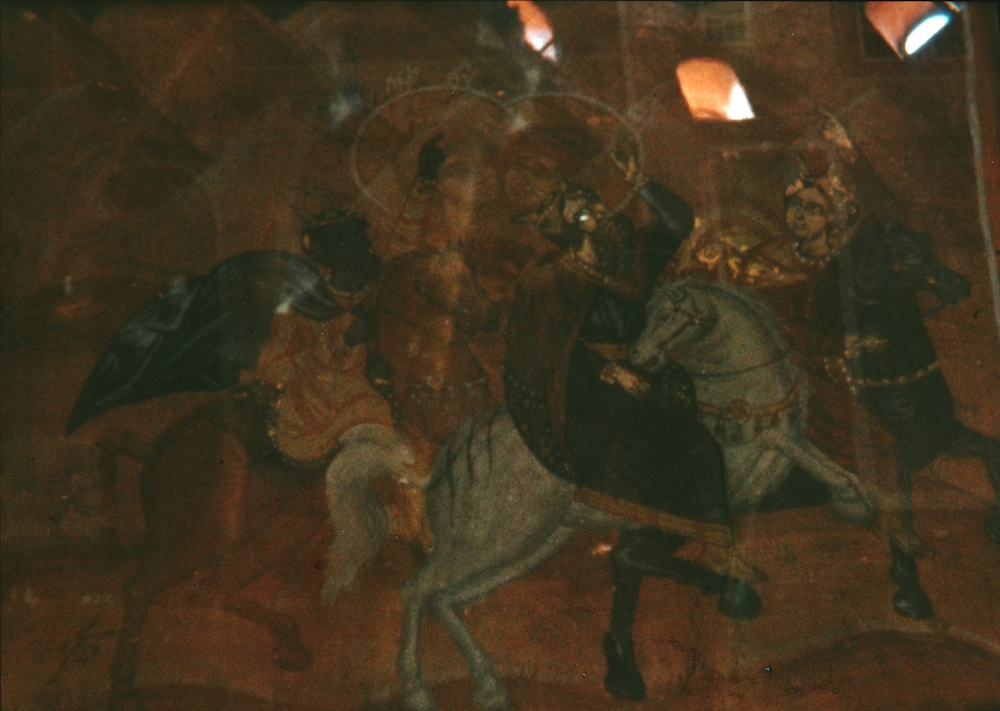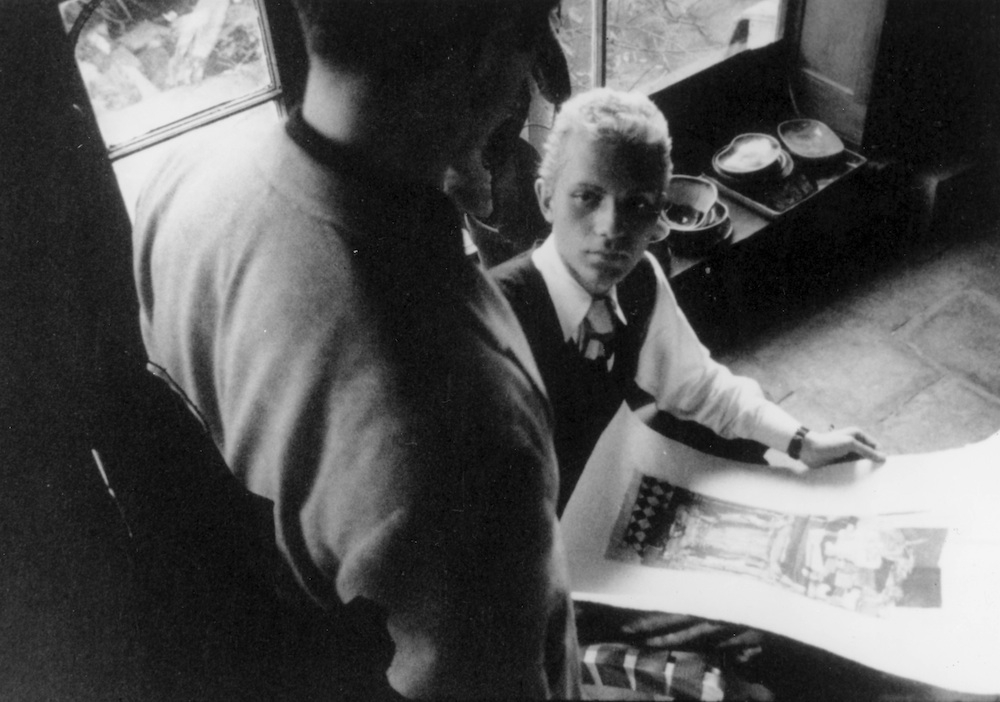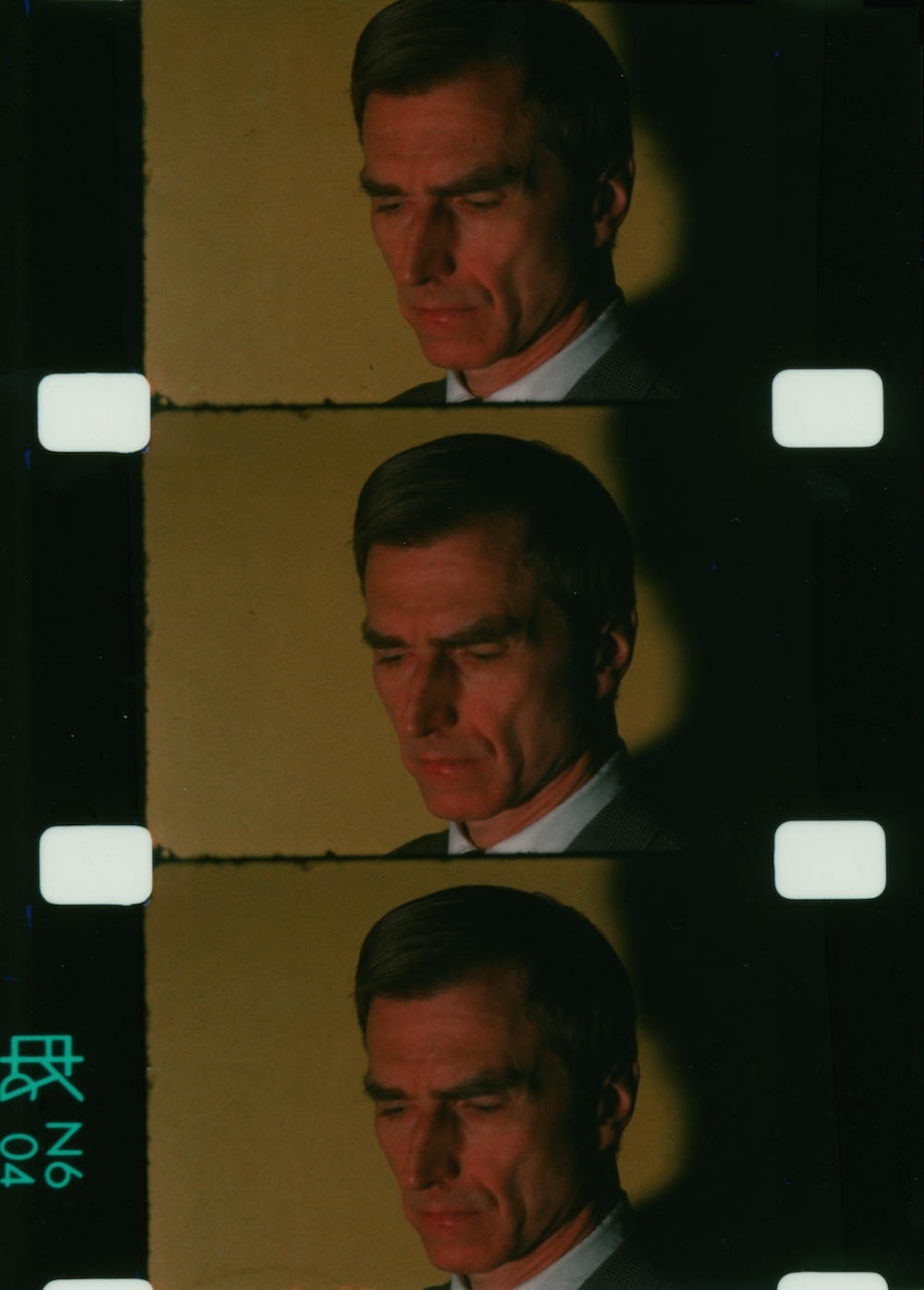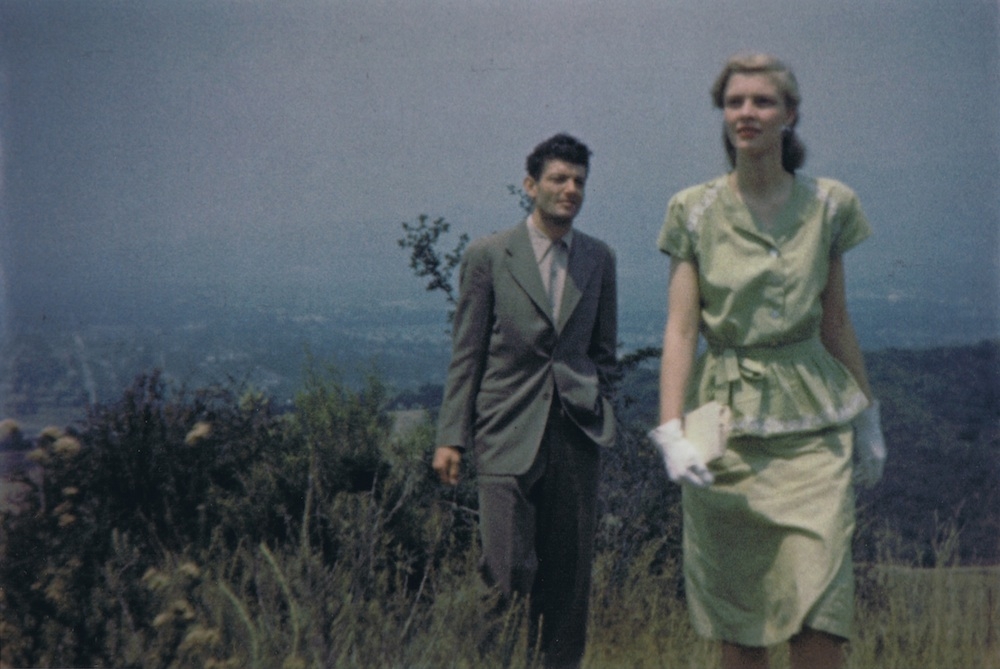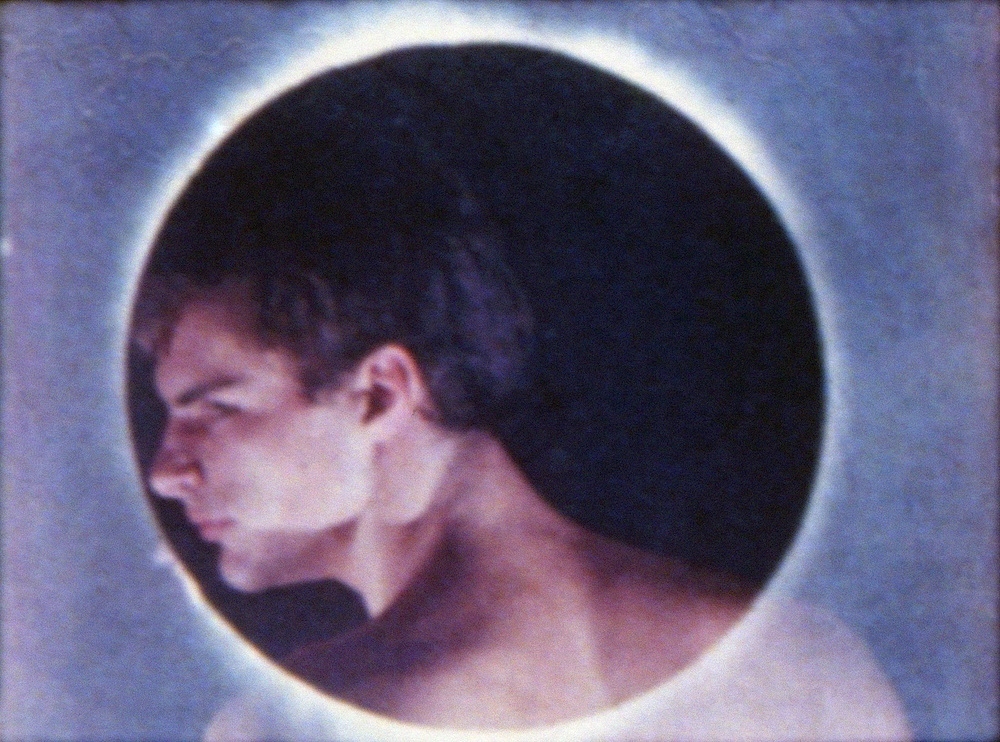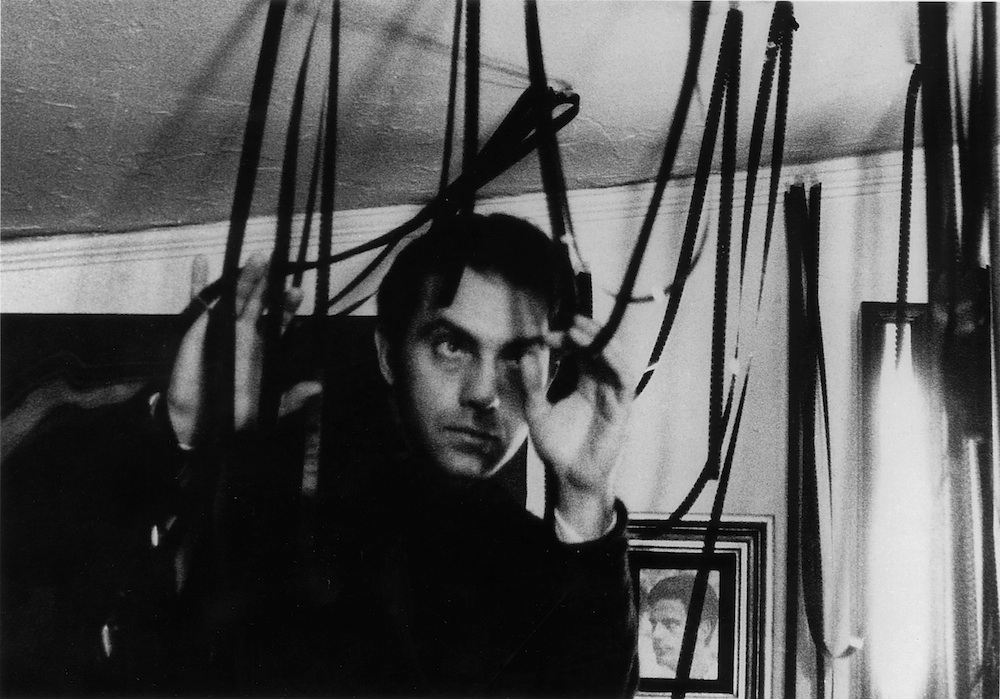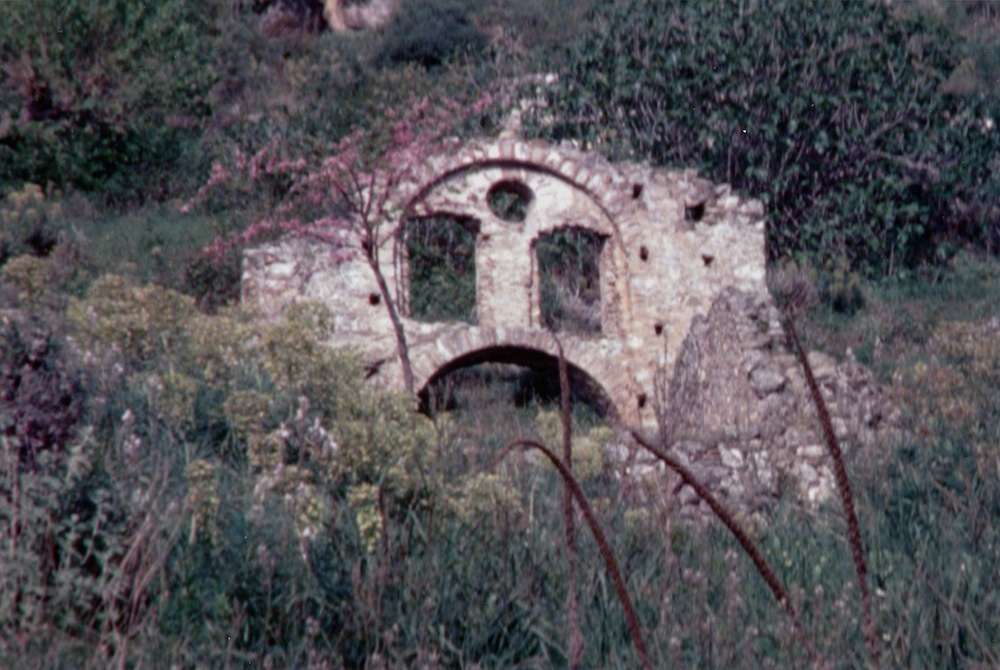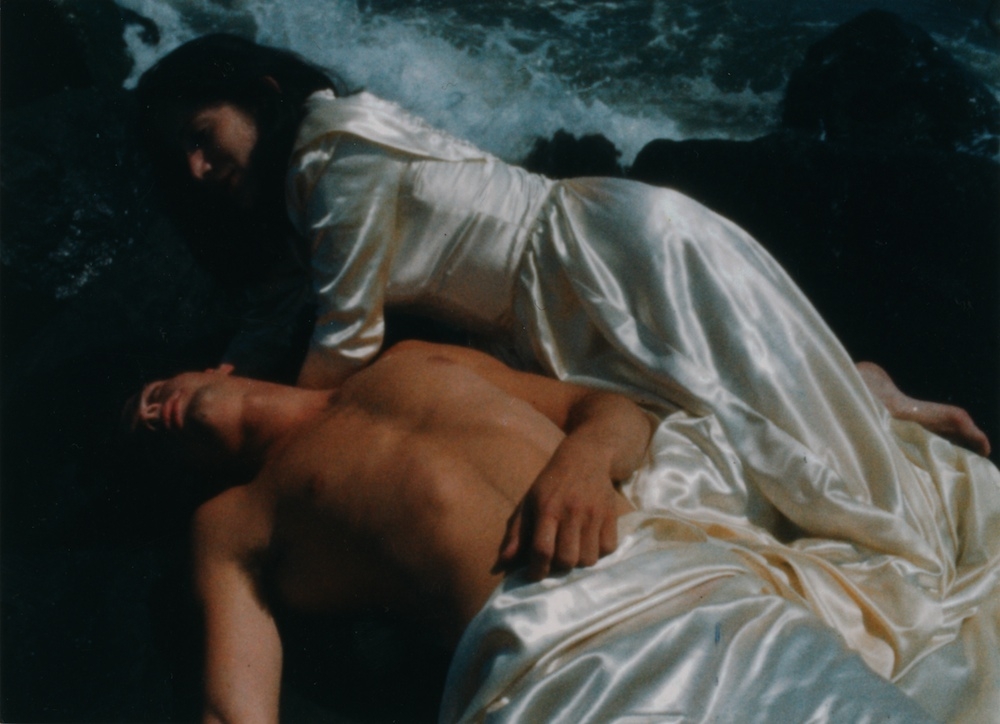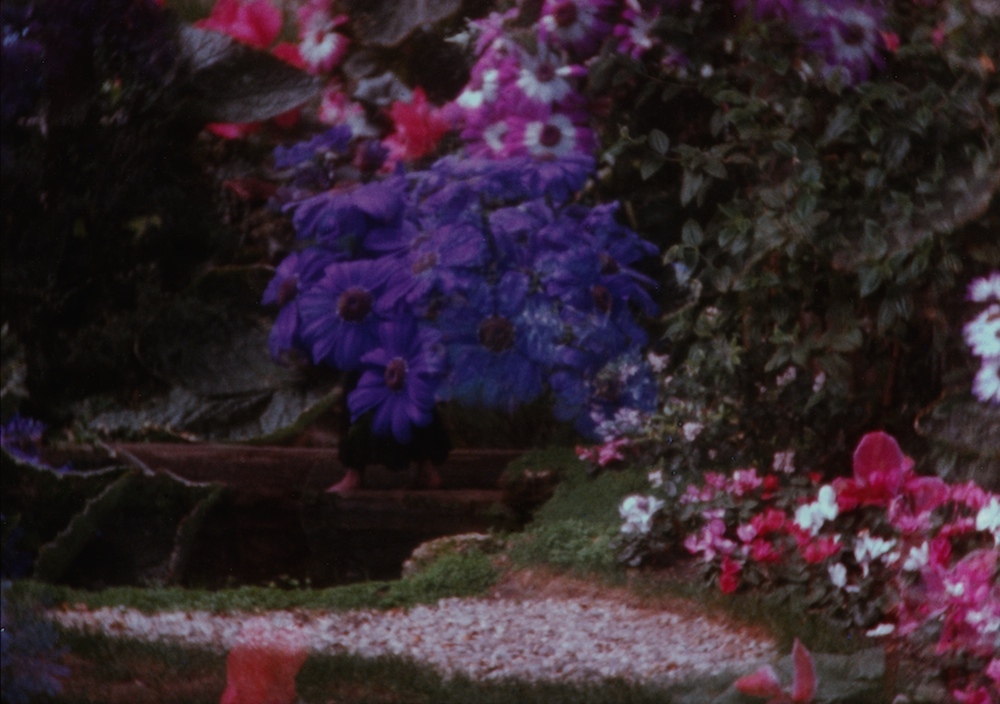Events Archive
A list of screenings and events that have taken place in support of our books is shown below. A maximum of 20 events are shown per page. Please use the monthly navigation links at the top or bottom of this list to view more recent events. Details can be expanded by using the ‘+’ symbol, and the ‘read more’ link within each event window.
The Illiac Passion
Gregory J. Markopoulos, The Illiac Passion, 1964-67, 92 min
Introduced by Mark Webber
Gregory J. Markopoulos (1928-92) was one of the most original filmmakers to emerge from the post-war avant-garde. His films, which often translated literary or mythological sources to a contemporary context, are celebrated for their extraordinary creativity, the sensuous use of colour and innovations in cinematic form. In the 1960s, Markopoulos was actively involved in New York’s vibrant film community – the same milieu in which landmark works such as Scorpio Rising (Kenneth Anger), Flaming Creatures (Jack Smith) and The Chelsea Girls (Andy Warhol) first enraptured audiences. It was here that Markopoulos made one of his most celebrated films, The Illiac Passion, an extravagant interpretation of ‘Prometheus Bound’ populated with fantastic characters from the underground scene. Warhol appears as Poseidon, alongside Beverly Grant, Taylor Mead, Jack Smith, and other important figures. The soundtrack of this visionary re-imagining of the classical realm features a fractured reading of Thoreau’s translation of Aeschylus and excerpts from Bartók.
This rare screening of The Illiac Passion celebrates the publication of “Film as Film: The Collected Writings of Gregory J. Markopoulos” (The Visible Press, 2014) and will be introduced by the book’s editor Mark Webber.
The projection will take place in the amazing Teatro Juarez in Guanajuato.
The Illiac Passion
Gregory J. Markopoulos, The Illiac Passion, 1964-67, 92 min
Introduced by Mark Webber
Esta proyección única de la mítica película The Illiac Passion de Gregory J. Markopoulos celebra la publicación de “El cine como película: Las Obras completas del Gregory J. Markopoulos” (The Visible Press, 2014), y será presentado por el editor del libro, Mark Webber.
Gregory J. Markopoulos (1928-1992) fue uno de los cineastas más originales de la vanguardia de postguerra. Sus películas, que suelen traducir fuentes literarias o mitológicas a un contexto contemporáneo, son reconocidas por su extraordinaria creatividad, el sensual uso de color y las innovaciones en la forma cinematográfica.
En los años sesenta, Markopoulos participó activamente en la dinámica comunidad cinematográfica de Nueva York – el mismo medio en el que las obras históricas como Scorpio Rising (Kenneth Anger), Flaming Creatures (Jack Smith) y The Chelsea Girls (Andy Warhol) encontraron sus primeras audiencias. Fue aquí que Markopoulos hizo una de sus películas más célebres, The Illiac Passion, una extravagante interpretación de “Prometeo encadenado” de Henry David Thoreau, poblada de personajes fantásticos de la escena underground. Warhol aparece como Poseidón junto a Beverly Grant, Taylor Mead, Jack Smith, y otras figuras importantes de la escena artística del momento. La banda sonora de esta visionaria re-interpretación de la esfera clásica ofrece una lectura fracturada de la traducción de Thoreau de Esquilo y extractos de la música Bartók.
En colaboración con Festival Internacional de Cine de Guanajuato y el Laboratorio Experimental de Cine.
Gregory J. Markopoulos: Film as Film: Program 1
Gregory J. Markopoulos, A Christmas Carol, 1940, 5 min
Gregory J. Markopoulos, Du Sang, de la volupté et de la mort, 1947-48, 70 min
Gregory J. Markopoulos, Christmas USA, 1949, 8 min
Made as a USC student in Los Angeles, Markopoulos’ first 16mm film Psyche took as its source the unfinished novella of the same name by Pierre Louÿs. Shown together with Lysis and Charmides (both made on his return to Toledo, Ohio, and inspired by Platonic dialogues), it forms the trilogy titled Du sang de la volupte et de la mort (1947-48). By boldly addressing lesbian and homosexual themes, the trilogy gained unwelcome notices in Films in Review and Variety where, in the repressive atmosphere of the early 1950s, it was branded “degenerate” following a screening at NYU. Such a response is unimaginable today for lyrical works that express sensuality through the symbolic use of colour and composition. Writing about these early films, Markopoulos chose to quote a statement by philosopher and theologian Mircea Eliade, offering viewers a clue to his entire body of work: “The whole man is engaged when he listens to myths and legends; consciously or not, their message is always deciphered and absorbed in the end.”
“The first thing which I did was to delete the novelette of its lush rhetoric and retain only its symbolic colour. In Psyche, colour plays an important role, similar to the role which colour plays in the paintings of Toulouse Lautrec. Colour reflects the true character of the individual before us, whether it be on the screen, in a painting, or in the street. Colour is Eros.” (Psyche’s Search for the Herb of Invulnerability, 1955)
Part of Gregory J. Markopoulos: Film as Film at Anthology Film Archives, New York, USA.
Gregory J. Markopoulos: Film as Film: Program 2
Gregory J. Markopoulos, Sorrows, 1969, 6 min
Gregory J. Markopoulos, The Mysteries, 1968, 80 min
The Mysteries was made in Munich, Spring 1968, during the same period in which Markopoulos directed two opera pieces for German television. (Rosa von Praunheim was his assistant on all three projects.) Writing in Artforum, Kristin M. Jones described the film as “… a mournful work in which, as in many of the earlier films, the rhythmic repetition of imagery evokes poetic speech, and changes in costume emphasize shifts in time, space, and emotion. Here, a young man’s struggles with memories of love and intimations of death are set alternately to deafening silence and the music of Wagner.” The Swiss chateau built for Wagner by King Ludwig II is documented in Sorrows, an in-camera film composed through intricate layers of superimposition.
“In my film I suggest that there is no greater mystery than that of the protagonists. War and Love are simply equated for what they are; the aftermath is inevitable, and a normal human condition, for which like the ancients one can only have pity and understanding. In this lies the mystery. All else is irrelevant. That there are other sub-currents of equal power in The Mysteries goes without saying; and, those who are capable of the numerous visual visitations and annunciations which the film offers them will realise what is the Ultimate Mystery of my work.” (Disclosed Knowledge, 1970)
Part of Gregory J. Markopoulos: Film as Film at Anthology Film Archives, New York, USA.
Gregory J. Markopoulos: Film as Film: Program 3
Gregory J. Markopoulos, Bliss, 1967, 6 min
Gregory J. Markopoulos, Gammelion, 1968, 55 min (Essential Cinema)
“To be loved means to be consumed. To love means to radiate with inexhaustible light. To be loved is to pass away, to love is to endure.” (Text by Rainer Maria Rilke, recited on the soundtrack of Gammelion.)
Markopoulos’ elegant film of the castle of Roccasinibalda in Rieti, Italy, (then owned by patron, publisher and activist Caresse Crosby) employs an intricate system of fades to extend five minutes of footage to an hour of viewing time. This inventive new film form, in which brief images appear amongst measures of black and clear frames, was a crucial step towards Markopoulos’ monumental final work Eniaios (1947-91). This screening of Gammelion will be preceded by Bliss, a portrait of the interior of a Byzantine church on the Greek island of Hydra, edited in-camera in the moment of filming.
“Fortunate is the filmmaker who possesses a daemon, and who passes naturally from season to season, always with renewed energies, to that crucial point where he is able to recognize what constitutes the sunken attitudes of his art; what constitutes the portent, eagle-shaped attitudes. Attitudes which in a season of plenty soar beyond the frailties and grievances of the creative personality. Forgotten and released are the self-acknowledged limitations, the often comical, continuous demands upon friends and acquaintances in the name of one’s art. Finally, the total illusion that has been inherent from the beginning in one’s striving shimmers, quivers, and sets one aflame.” (Correspondences of Smell and Visuals, 1967)
Part of Gregory J. Markopoulos: Film as Film at Anthology Film Archives, New York, USA.
Markopoulos/Beavers: Experimental Films/Experimental Lives
Gregory J. Markopoulos, Christmas USA, 1949, 8 min
Gregory J. Markopoulos, Through a Lens Brightly: Mark Turbyfill, 1967, 15 min
Robert Beavers, Early Monthly Segments, 1968-70/2000, 33 min
Gregory J. Markopoulos, Gilbert and George, 1970/1989-91, 12 min
Robert Beavers, Listening to the Space in My Room, 2010, 19 min
Introduced and followed by a conversation with Mark Webber and Robert Beavers
CHRISTMAS U.S.A.
Gregory J. Markopoulos, 1949, 16mm, 8 min
“The film is a subtly joyous depiction of sexual and sensual awakening – a celebration of a young man’s discovery of strange, exciting things lurking beyond the drab normality of the everyday. It’s a specific metaphor for Markopoulos’ homosexuality, of course, but also more generally for the sexual and intellectual awakenings of adolescence, the escape from the family to the individual life. That Markopoulos populates this moment with such wonder, passion, and mystical tension is a testament to his sure-handed ability to convey complex emotions cinematically, even at this early stage of his career.” (Ed Howard)
THROUGH A LENS BRIGHTLY: MARK TURBYFILL
Gregory J. Markopoulos, 1967, 16mm, 15 min
“One of the most accomplished works in Markopoulos’s series of film portraits, Through a Lens Brightly is a vivid study of the dancer and poet Mark Turbyfill that uses paintings and photographs in his home to recapture and illuminate a life in the arts.” (Harvard Film Archive)
EARLY MONTHLY SEGMENTS
Robert Beavers, 1968-70/2000, 35mm, 33 min
“Early Monthly Segments, filmed when Beavers was 18 and 19 years old, now forms the opening to his film cycle, “My Hand Outstretched to the Winged Distance and Sightless Measure.” It is a highly stylized work of self-portraiture, depicting filmmaker and companion Gregory J. Markopoulos in their Swiss apartment. The film functions as a diary, capturing aspects of home life with precise attention to detail, documenting the familiar with great love and transforming objects and ordinary personal effects into a highly charged work of homoeroticism.” (Susan Oxtoby)
GILBERT AND GEORGE
Gregory J. Markopoulos, 1970/1989-91, 16mm, 12 min
“Gregory Markopoulos’ Gilbert and George (1970) is a film marked by absence. Though a portrait of the artistic duo, the film indulges in none of the privileging of visibility on which the genre of portraiture often rests. Much of its twelve-minute duration is filled not with likenesses of the artists but with black and white leader. Occasionally a flash of image – a pair of feet, for example – will fill the screen for a brief moment before retreating again. The flow of movement, so crucial to most films, is missing. In its place is a rigorous engagement with the medium’s most basic elements, one that returns the viewer to the stillness of the individual film frame.” (Erika Balson)
LISTENING TO THE SPACE IN MY ROOM
Robert Beavers, 2010, 16mm, 19 min
“Ostensibly a portrait of a place where the artist had resided until recently, the film conjures not only the memory but also the physical presence of those who have previously stayed there. Adhering to a solitary intimacy while simultaneously acting as an ode to human endeavour and shared impulses toward fulfillment through art, Listening to the Space in my Room is a moving testament to existence (whose traces are found in literature, music, filmmaking, gardening) and our endless search for meaning and authenticity. The film’s precise yet enigmatic sound-image construction carries a rare emotional weight. ” (Andréa Picard)
Presented by the Yale Film Studies Program, Hellenic Studies Program, Yale Film Colloquium, and Films at the Whitney.
Gregory J. Markopoulos: Film as Film: Program 4
Gregory J. Markopoulos, Genius (from Eniaios III), 1970, 86 min
Inspired by the legend of Faust, Genius is a triple-portrait of three significant art world figures – the British artist David Hockney, the Argentinian surrealist painter Leonor Fini, and the German-born art dealer Daniel-Henry Kahnweiler, an important early supporter of the Cubists. With its measured structure, carefully spacing images between passages of clear or opaque film, Genius forms the central section of the third cycle of Eniaios. This 80-hour long silent film, one of the most remarkable and ambitious projects in the history of cinema, is intended to be shown only at the remote site in Greece chosen by Markopoulos as the ideal setting for his work.
“In film, in the beautiful, stupid past of the commercial film with its total lack of creative achievement, though stated otherwise by film historians, the absolute Barbarians of our diminishing cultural age, the film construction was dependant on the story in the guise of the necessary message; the necessary message impounded for the benefit, that is the enlightenment and therefore the deliberate enslavement of the filmgoer. However, in my finished work, entitled Genius,the development is along absolute philosophical lines. For instance the three unsuspecting figures who became my characters, represent, in their own milieu, the crises of our times. I refuse to say more. Perhaps, I do not know more! Suffice to say, that even as I was filming, I knew: we look at a face, at the gestures, and we know, if we so wish, the content of the inner being.” (The Redeeming of the Contrary, 1973)
Part of Gregory J. Markopoulos: Film as Film at Anthology Film Archives, New York, USA.
Gregory Markopoulos’ Galaxie
Gregory J. Markopoulos, Galaxie, 1966, 92 mins
Introduced by Mark Webber
“What Truman Capote has done with two murderers in cold blood, Gregory Markopoulos has done with 33 Greenwich Villagers: fictionalised the living human being. Galaxie, the latest work of biophotography stemming from the mind of Joyce, the vision and brush of Picasso, and the urbanely-romantic camera of Markopoulos.” – Film Culture
In 1966, Gregory Markopoulos filmed portraits of notable figures in the New York art world, including painters, poets, critics, filmmakers, and choreographers. Markopoulos populated his Galaxie with a remarkable constellation of personalities, ranging from those in his immediate circle of filmmakers (Jonas Mekas, Storm de Hirsch, the Kuchar Brothers) to luminaries from other art forms (Jasper Johns, W.H. Auden, Allen Ginsberg). Each is shot with a single roll of 16mm film and, though edited entirely in-camera in the moment of filming, comprises many layers of dense superimpositions that build a complex portrait of the sitter. The subjects were invited to pose in their home or studio, together with personal objects of their choice: Parker Tyler is a seen with a drawing by Tchelitchew, Susan Sontag with photographs of Garbo and Dietrich, Shirley Clarke and Maurice Sendak both with children’s toys, Gregory Battcock with a Christmas card and zebra rug. The film is silent except for the sound of a ritual bell, its number of rings increasing incrementally until 30 chimes accompany the final portrait.
With this new form of portraiture, Markopoulos developed a detached but empathetic middle ground between the cool objectivity of Warhol’s Screen Tests and the informal portrayals of friends seen in the diary films of Mekas. The portrait would subsequently become a prevalent aspect of Markopoulos’ filmmaking for works such as Through a Lens Brightly: Mark Turbyfill, Political Portraits, and Index: Hans Richter; Saint Actaeon. Genius, his interpretation of Faust (screening at Anthology Film Archives on September 13), consists only of portraits of Leonore Fini, David Hockney, and Daniel Henry Kahnweiler. Many such studies were later incorporated in his monumental, final work Eniaios.
(Mark Webber)
This screening celebrates the publication of Film as Film: The Collected Writings of Gregory J. Markopoulos, edited by Mark Webber with a foreword by P. Adams Sitney, published by The Visible Press, London.
The Illiac Passion
Gregory J. Markopoulos, The Illiac Passion, 1964-67, 92 min
Introduced by Robert Beavers and Mark Webber
Throughout his life, Markopoulos remained closely connected to his heritage and ultimately saw the Greek landscape as the ideal setting for viewing his films. The Illiac Passion, one of his most highly acclaimed films, is a visionary interpretation of ‘Prometheus Bound’ starring mythical beings from the 1960s underground. The soundtrack of this contemporary re-imagining of the classical realm features a reading of Thoreau’s translation of the Aeschylus text and excerpts from Bartok.
“The Illiac Passion, which features chiaroscuro passages reminiscent of Anger’s Inauguration of the Pleasure Dome of 1954, and incorporates 25 characters, is loosely based on Aeschylus’ ‘Prometheus Bound’. For a viewer seeing this extravagant ode to creation some thirty years after its making, the film’s most plangent moments involve Markopoulos’ affectionate casting of friends as mythical figures – Andy Warhol’s Poseidon pumping on an Exercycle above a sea of plastic, Taylor Mead’s Demon leaping, grimacing, and streaming vermilion fringes, and Jack Smith’s bohemian Orpheus, spending a quiet afternoon at home with Eurydice.” (Kristin M. Jones, Artforum)
Co-presented with Cinema Studies at the University of Pennsylvania.
Film as Film: The Cinema of Gregory Markopoulos: Program 1
Gregory J. Markopoulos, Bliss, 1967, 6 min
Gregory J. Markopoulos, Gammelion, 1968, 55 min
Followed by a conversation with P. Adams Sitney, Mark Webber and Robert Beavers
“To be loved means to be consumed. To love means to radiate with inexhaustible light. To be loved is to pass away, to love is to endure.” (Text by Rainer Maria Rilke, recited on the soundtrack of Gammelion.)
GAMMELION
Markopoulos’ elegant film of the castle of Roccasinibalda in Rieti, Italy, (then owned by patron, publisher and activist Caresse Crosby) employs an intricate system of fades to extend five minutes of footage to an hour of viewing time. This inventive new film form, in which brief images appear amongst measures of black and clear frames, was a crucial step towards Markopoulos’ monumental final work Eniaios (1947-91).
BLISS
An exquisite portrait of the interior of a Byzantine church on the Greek island of Hydra, edited in-camera in the moment of filming.
Part of Film as Film: The Cinema of Gregory Markopoulos at Harvard Film Archive, Cambridge, MA.
Film as Film: The Cinema of Gregory Markopoulos: Program 2
Gregory J. Markopoulos, Himself as Herself, 1967, 60 min
Gregory J. Markopoulos, The Dead Ones, 1949, 28 min
Gregory J. Markopoulos, Through a Lens Brightly: Mark Turbyfill, 1967, 15min
Introduced by Mark Webber
HIMSELF AS HERSELF
“Loosely based on Balzac’s novel Seraphita but merging its male and female protagonists, the film is at once melancholy and transcendent, laden with the gloom of what Markopoulos termed the character’s denial of self but also alive with the possibility of transformation. Clad in formal attire, the young hero seems the essence of maleness, yet he’s troubled by vaguely feminine objects – a fluttering fan, a gold-colorred foot standing on fur. Soon his masculine and feminine selves are intercut, the latter signaled not by drag but by a simple sari, as each of his identities appears to look and gesture at the other. The images are tinged with a powerful if partially suppressed eroticism, yet the plush interiors (this is a rich young man) trap us in a deadened world of opulence, the thick colors embedding the character in the decor. Most important, Markopoulos’s radical editing intercuts two or three scenes, sometimes in a single-frame flicker, which undermines the stability of any one locale or person, each image poised to escape its immediate moment.” (Fred Camper)
THE DEAD ONES
Markopoulos’ first attempt at making a 35mm feature film, clearly inspired by the cinema of Jean Cocteau, was left unfinished and the materials were lost for many years.
THROUGH A LENS BRIGHTLY: MARK TURBYFILL
The life of painter, dancer and poet Mark Turbyfill, seen in his 70th year, is evoked through Markopoulos’ unique form of cinematic portraiture.
Part of Film as Film: The Cinema of Gregory Markopoulos at Harvard Film Archive, Cambridge, MA.
Film as Film: The Cinema of Gregory Markopoulos: Program 3
Gregory J. Markopoulos, Galaxie, 1966, 82 min
Introduced by Mark Webber and Roy Grundmann
Galaxie is his intimate record of cultural luminaries in mid-1960s New York: 33 painters, poets, filmmakers, choreographers, and critics, including W. H. Auden, Jasper Johns, Susan Sontag, Paul Thek, Maurice Sendak, Shirley Clarke, George and Mike Kuchar, and Allen Ginsberg, whom he observed in their studios or homes and filmed in a single session. While Andy Warhol had his Screen Tests, and Brakhage and Jonas Mekas were also making their own beautiful film portraits, Markopoulos perfected a technique of layering and editing within his Bolex camera that had the effect, he noted, of making “the idea and the image more concentrated; the result a more brilliant appeal to the mind and dormant senses.” (Museum of Modern Art, NY)
Part of Film as Film: The Cinema of Gregory Markopoulos at Harvard Film Archive, Cambridge, MA.
Film as Film: The Cinema of Gregory Markopoulos: Program 4
Gregory J. Markopoulos, A Christmas Carol, 1940, 5 min
Gregory J. Markopoulos, Christmas USA, 1949, 8 min
Gregory J. Markopoulos, Du Sang, de la volupté et de la mort, 1947-48, 70 min
Introduced by Robert Beavers
Made as a USC student in Los Angeles, Markopoulos’ first 16mm film Psyche took as its source the unfinished novella of the same name by Pierre Louÿs. Shown together with Lysis and Charmides (both made on his return to Toledo, Ohio, and inspired by Platonic dialogues), it forms the trilogy titled Du sang de la volupte et de la mort (1947-48). By boldly addressing lesbian and homosexual themes, the trilogy gained unwelcome notices in Films in Review and Variety where, in the repressive atmosphere of the early 1950s, it was branded “degenerate” following a screening at NYU. Such a response is unimaginable today for lyrical works that express sensuality through the symbolic use of color and composition. Writing about these early films, Markopoulos chose to quote a statement by philosopher and theologian Mircea Eliade, offering viewers a clue to his entire body of work: “The whole man is engaged when he listens to myths and legends; consciously or not, their message is always deciphered and absorbed in the end.” The programme also includes his earliest film, an interpretation of Dickens made when the Markopoulos was only eight years old, and Christmas USA, in which documentary and fiction are woven together to convey a moment of awakening in the mid-West at the end of the 1940s. (Mark Webber)
Part of Film as Film: The Cinema of Gregory Markopoulos at Harvard Film Archive, Cambridge, MA.
Film as Film: The Cinema of Gregory Markopoulos: Program 5
Gregory J. Markopoulos, Genius, 1970/1989-91, 60 min
Gregory J. Markopoulos, Gilbert and George, 1975/1989-91, 12 min
“Beloved spectators of my distant Temenos, what evolved was the ultimate concern for the medium of film. A continuous working decision not to betray you as film spectators; not to impose a message in your laps. But to deposit before you on a virile screen the very depths which concerned the present work in such a manner that you might one day at its presentation realize that I have been concerned always for you. I now repeat again the word, an effortless illusion and triumph with the legend of Faust; and, with the future film spectator of the Temenos supplying the very brilliance.” (Gregory J. Markopoulos)
GENIUS
Portraits of the artists David Hockney and Leonor Fini are intercut with one of art dealer Daniel-Henry Kahnweiler. Initially Markopoulos shot three autonomous portraits, but he quickly came to believe that he had been making a version of Faust without realizing it. He first called the film The Illuminations of Faust and later settled on Genius. In his essay ‘The Redeeming of the Contrary’, published in the Spring 1971 issue of Film Culture, Markopoulos stressed the ambiguity of his creation and the intuitive nature of his working processes: “I had no idea that these three figures of the art world … would become the very elements of my Faust. And yet they did. They evolved, once the decision was made, effortlessly.” The spontaneity of this evolution from autonomous portraits of figures “sitting in their own rooms” lies at the core of what Markopoulos took to be his gift to his future audience. (P. Adams Sitney)
GILBERT AND GEORGE
A portrait of the British artists, two living sculptures, filmed in Paris on the occasion of their exhibition at the Sonnabend Gallery. (Mark Webber)
Part of Film as Film: The Cinema of Gregory Markopoulos at Harvard Film Archive, Cambridge, MA.
Film as Film: Three Films by Gregory J. Markopoulos
Gregory J. Markopoulos, Ming Green, 1966, 7 min
Gregory J. Markopoulos, Twice a Man, 1963, 48 min
Gregory J. Markopoulos, Through a Lens Brightly: Mark Turbyfill, 1967, 14 min
Introduced by Mark Webber and Robert Beavers
Celebrating the publication of Film as Film: The Collected Writings of Gregory J. Markopoulos (The Visible Press), filmmaker Robert Beavers, and the book’s editor Mark Webber will present a very rare screening of three early Markopoulos films that were made in the United States in the mid-1960s.
Co-presented by Basilica Hudson and the Film and Electronic Arts Department at Bard College.
MING GREEN
Dedicated to Stan Brakhage. Music: Traumen / Wesendonck Lieder by Richard Wagner. Filmed in New York City.
“An extraordinary self-portrait conveyed through multiple layered superimpositions of the filmmaker’s sparsely furnished room in Greenwich Village.” (Mark Webber)
TWICE A MAN
Based on the story of Hippolytus. Featuring Paul Kilb, Olympia Dukakis, Albert Torgesen. Music: Excerpt from Manfred Symphony, op. 58 by Pyotr Tchaikovsky. Filmed in New York City, Staten Island, Long Island and Bear Mountain Park.
“Twice A Man is a fragmented re-imagining of the Greek myth of Hippolytus, who was killed after rejecting the advances of his stepmother. Markopoulos’ vision transposes the legend to 1960s New York and has its main character abandon his mother for an elder man. Employing sensuous use of colour, the film radicalised narrative construction with its mosaic of ‘thought images’ that shift tenses and compress time. One of the touchstones of independent filmmaking, Twice A Man was made in the same remarkable milieu as Scorpio Rising and Flaming Creatures by a filmmaker named ‘the American avant-garde cinema’s supreme erotic poet’ by its key critic P. Adams Sitney.” (Mark Webber)
THROUGH A LENS BRIGHTLY: MARK TURBYFILL
Featuring Mark Turbyfill. Filmed in Chicago.
“The life of painter, dancer and poet Mark Turbyfill, seen in his 70th year, is evoked through traditional portraiture and personal objects.” (Mark Webber)
Basilica Screenings is a film series that presents an array of works from new and repertory narrative features, documentaries, experimental films, to video and media art, often with filmmakers and special guests in attendance for a discussion following the screenings. Programmed by Basilica Hudson’s film curator Aily Nash, and creative directors Melissa Auf der Maur and Tony Stone.
Gregory Markopoulos: Collected Writings
Celebrating the publication of Film as Film: The Collected Writings of Gregory J. Markopoulos (The Visible Press), filmmaker Robert Beavers, scholar Daniel Heller-Roazen, and the volume’s editor Mark Webber will lead a discussion of Markopoulos’ unique vision of film and the film spectator. Following the discussion will be a very rare screening of one reel of his magnum opus, Eniaios. This publication contains some ninety out-of-print or previously unavailable articles by the Greek-American filmmaker (1928-1992) who, as a contemporary of Kenneth Anger, Stan Brakhage and Andy Warhol, was at the forefront of a movement that established a truly independent form of cinema. Beginning with his early writings on the American avant-garde and auteurs such as Dreyer, Bresson, and Mizoguchi, it also features numerous essays on Markopoulos’ own practice, and on films by Beavers, that were circulated only in journals, self-published editions, or program notes. The texts become increasingly metaphysical and poetic as the filmmaker pursued his ideal of Temenos, an archive and screening space to be located at a remote site in the Peloponnese where his epic, final work Eniaios could be viewed in harmony with the Greek landscape.
In the last decades of his life, working quietly in Europe, Markopoulos re-edited his whole body of earlier films and dozens of new ones into one magnum opus, Eniaios. It is one of the longest films ever made: the complete film lasts approximately 80 hours and is divided into 22 cycles. From the moment he began to construct it, it was Markopoulos’ intention that Eniaios be projected only at the open-air site of what he called “The Temenos,” in a field near the village of Lyssaraia, the birthplace of his father in the Peloponnese of mainland Greece. For Eniaios, the summa of his career, Markopoulos wished to create a deeply personal and utterly unique cinematic experience. He chose the site for its natural beauty; he had conceived the Temenos as a viewing space where the physical environment would be in harmony with his idea of cinema as an instrument of philosophical and psychological revelation. In calling his projection space “The Temenos,” the filmmaker was invoking the religious traditions of ancient Greece, where a portion of land was set aside for the ritual worship of a god. The original meaning of the term “Temenos” is “a piece of land set apart.” Markopoulos wanted his life work shown in a space “set apart,” when after years of working in the international arena of the experimental film, he grew disillusioned with the interrelated commercialism of the film industry, the universities, and the art museums. He was convinced that the grandeur of what he called “film as film” required something radically different.
Gregory Markopoulos: The Collected Writings is made possible with support from Axe-Houghton Foundation and Lambent Foundation Fund of Tides Foundation, and in part by public funds from New York City Department of Cultural Affairs in partnership with the City Council and New York State Council on the Arts with the support of Governor Andrew Cuomo and the New York State Legislature.
Film as Film: The Cinema of Gregory Markopoulos: Program 6
Gregory J. Markopoulos, Hagiographia II, 1970/1989-91, 60 min
Past the gates of the Temenos, and upon the twin hills the film spectator of the future will encounter the immeasurable works of Beavers and Markopoulos. On one hill will be the space of Beavers. On another hill there will be the space of Markopoulos. Here the film spectator of the future will devote himself to eternity, to the works of Beavers, to the works of Markopoulos. The spectres of distribution will have been vanquished; the spectres of projection will have been vanquished; the spectres of printing will have been vanquished. The patron of the Temenos will be he who is also unknown; he who is without gifts of any kind; he who will be as immortal as the works being presented; he who will recognize that of all the arts only film needs a space in which to be seen; the rest is all artificial: museums, theatres and such. Only in the heart of the Peloponnesus, in Pelop’s land will film culture survive enhanced by the spirit of a truly simple and free people; the Greeks. The Greece today maligned by the truly lesser powers will be the victor.”(Gregory J. Markopoulos, The Filmmaker’s Perception in Contemplation, 1972)
Part of Film as Film: The Cinema of Gregory Markopoulos at Harvard Film Archive, Cambridge, MA.
Gregory J. Markopoulos: Talk + Screening
Gregory J. Markopoulos, Twice a Man, 1963, 48 min
Preceded by an illustrated talk by Mark Webber
To celebrate the publication of Film as Film: The Collected Writings of Gregory J. Markopoulos, the book’s editor Mark Webber will give an illustrated talk to introduce Markopoulos’ work, his extraordinary writings of cinema, and his landmark film Twice a Man (1963).
TWICE A MAN
Gregory J. Markopoulos, 1963, USA, 16mm, colour, sound, 48 minutes
“Twice A Man is a fragmented re-imagining of the Greek myth of Hippolytus, who was killed after rejecting the advances of his stepmother. Markopoulos’ vision transposes the legend to 1960s New York and has its main character abandon his mother for an elder man. Employing sensuous use of colour, the film radicalised narrative construction with its mosaic of ‘thought images’ that shift tenses and compress time. One of the touchstones of independent filmmaking, Twice A Man was made in the same remarkable milieu as Scorpio Rising and Flaming Creatures by a filmmaker named ‘the American avant-garde cinema’s supreme erotic poet’ by its key critic P. Adams Sitney.” (Mark Webber)
Featuring Paul Kilb, Olympia Dukakis, Albert Torgesen. Music: Excerpt from Manfred Symphony, op. 58 by Pyotr Tchaikovsky. Filmed in New York City, Staten Island, Long Island and Bear Mountain Park.
Presented by Courtisane, in collaboration with UGent – Vakgroep Kunst-, Muziek- en Theaterwetenschappen on the occasion of the course “Sleutelmomenten uit de geschiedenis van de experimentele film en videokunst” by Prof. Dr. Steven Jacobs.
Don’t miss the screenings of Markopoulos’ films at the ÂGE D’OR festival at Cinematek Brussels.
Markopoulos 1
Gregory J. Markopoulos, Twice a Man, 1963, 48 min
Gregory J. Markopoulos, Through a Lens Brightly: Mark Turbyfill, 1967, 14 min
Introduced by Mark Webber
A major achievement in Markopoulos’ research in terms of editing and the use of colour, Twice a Man is considered by many to be the filmmaker’s masterpiece. This contemporary transposition of the myth of Phaedra, aesthetically shattered, reinvents melodrama. Followed by a magnificent portrait of the dancer and poet Mark Turbyfill, whose vibrant images seem intertwined in an almost musical structure.
Markopoulos 2
Gregory J. Markopoulos, Bliss, 1967, 6 min
Gregory J. Markopoulos, The Illiac Passion, 1964-67, 92 min
Introduced by Mark Webber and Robert Beavers
A visionary interpretation of the myth of Prometheus, The Illiac Passion is also one of the most acclaimed movies of the author. In this ode to creation, Markopoulos gave Jack Smith the role of Orpheus, casts Andy Warhol as Poseidon and Gregory Battcock as Phaeton. Bartók’s musical passages and text excerpts from Aeschylus, translated by Thoreau and read by Markopoulos, compose the soundtrack. Preceded by a lyrical description of a Byzantine church on the Greek island of Hydra.

